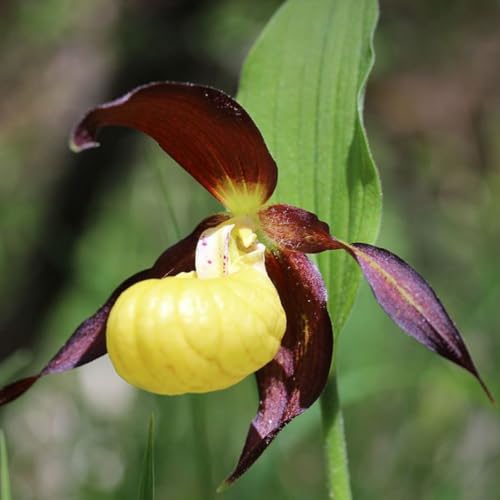Happypaphy7
Paphlover
I see that you want to emphasize on the proper nutrition which of course is very important for any living things, but your saying vast majority of paphs gone are due to improper feeding can hardly be true.
As I'm sure you know very well that many factors cause the loss of them.
Nutrition is just one part of the picture. Improper temperature range, insufficient watering and low humidity among other things can really ruin lots of plants.
I've seen greenhouse full of half baked or frozen plants as a result of system shut down or severe weather conditions.
I've seen badly diseased plants marked 50% off at nursery sales (of course I won't even take them even if they paid me to take them lol) and plants covered in mites and mealies crawling around on the flowers and leaves.
Or plants being sold to wrong people who just have no idea how to grow plants.
I believe most seedings and near blooming sized plants sold to general public will suffer because of improper handling and culture of the plants. Improper nutrition will be one of the many problem, not the ultimate cause.
There's a big misunderstanind among many people. They see something impressive or simply something they like and often the first thing or the only thing they ask is what do you feed? I am highly irratated and tell them nothing. lol
They think by fertilizing with certain products or certain frequencies, they can make their plants go bonkers and bloom well.
They completely lack or disregard the whole picture. Proper temperature range for different plants and proper & good watering, starting with healthy strong plants, proper light level...but no, always one things, what do you feed? Sigh~
As I'm sure you know very well that many factors cause the loss of them.
Nutrition is just one part of the picture. Improper temperature range, insufficient watering and low humidity among other things can really ruin lots of plants.
I've seen greenhouse full of half baked or frozen plants as a result of system shut down or severe weather conditions.
I've seen badly diseased plants marked 50% off at nursery sales (of course I won't even take them even if they paid me to take them lol) and plants covered in mites and mealies crawling around on the flowers and leaves.
Or plants being sold to wrong people who just have no idea how to grow plants.
I believe most seedings and near blooming sized plants sold to general public will suffer because of improper handling and culture of the plants. Improper nutrition will be one of the many problem, not the ultimate cause.
There's a big misunderstanind among many people. They see something impressive or simply something they like and often the first thing or the only thing they ask is what do you feed? I am highly irratated and tell them nothing. lol
They think by fertilizing with certain products or certain frequencies, they can make their plants go bonkers and bloom well.
They completely lack or disregard the whole picture. Proper temperature range for different plants and proper & good watering, starting with healthy strong plants, proper light level...but no, always one things, what do you feed? Sigh~
Last edited:














































